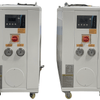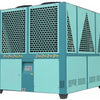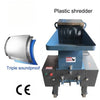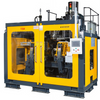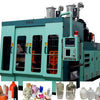The 50HP Air-Cooled Scroll Chiller: A Workhorse for Industrial Process Cooling and Its Technological Advantages
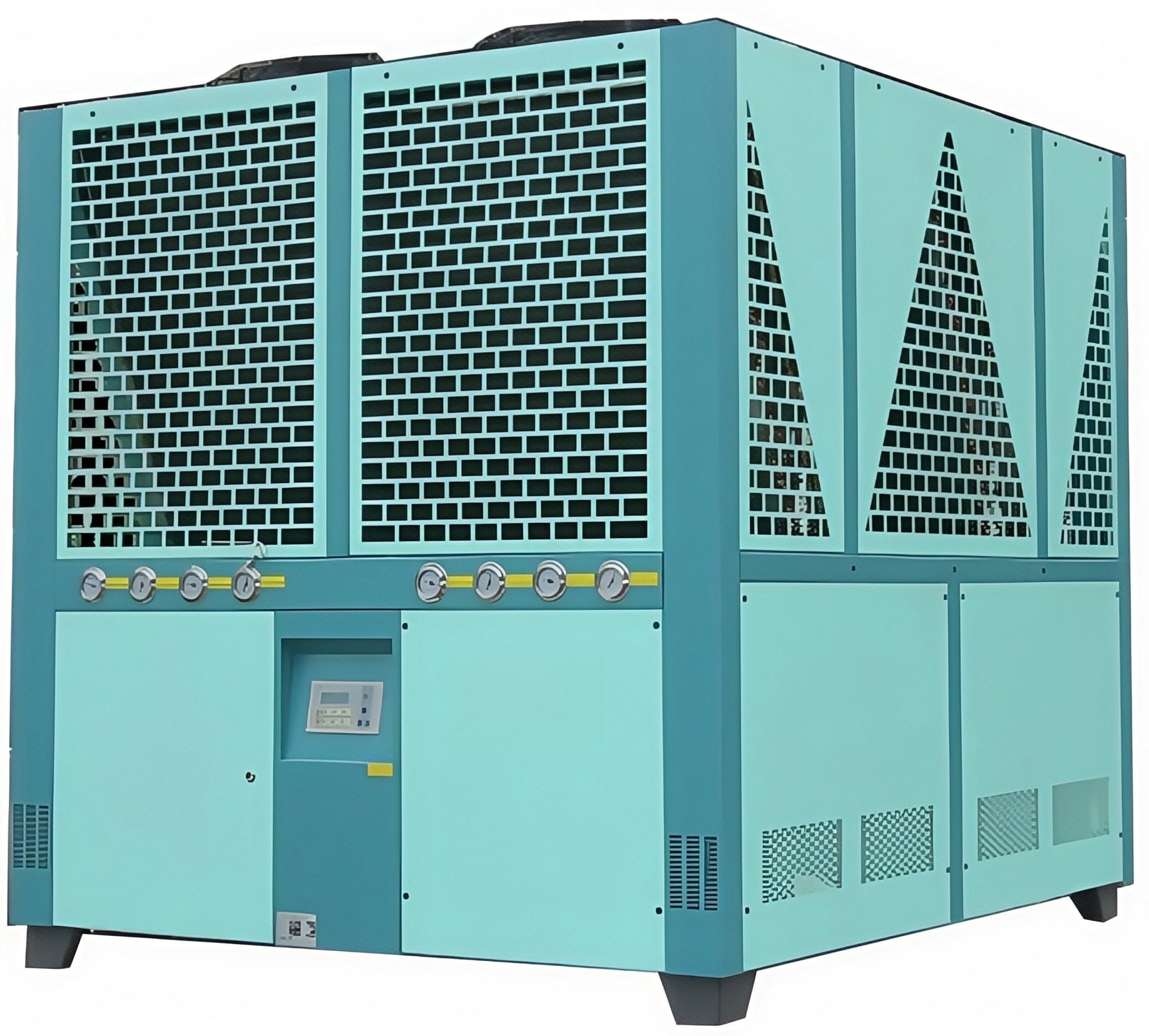
1. Introduction Precise temperature control is a critical factor in countless industrial processes, directly impacting product quality, production efficiency, and equipment longevity. Chillers, as devices that remove heat from a process fluid (typically water or a water-glycol solution) and reject it to the environment, are the backbone of this thermal management. Among the various chiller types, air-cooled units offer a distinct advantage: they eliminate the need for external cooling towers and a continuous supply of cooling water, thereby simplifying installation, reducing maintenance complexity, and conserving water resources. The 50HP (approximately 37.3 kW) capacity unit represents a significant workhorse in this category, capable of delivering substantial cooling power (typically around 148.3 kW or 127,500 kcal/h) for a wide array of applications. This paper focuses on the 50HP air-cooled chiller equipped with scroll compressors, a technology renowned for its reliability and efficiency, to explore its design, operation, and critical role in contemporary industrial settings.
2. Working Principle and Core System Architecture The 50HP air-cooled scroll chiller operates on the standard vapor-compression refrigeration cycle, modified for air-cooled heat rejection.
-
2.1. The Refrigeration Cycle:
- Evaporation: In the evaporator (typically a shell-and-tube heat exchanger), the liquid refrigerant (commonly R407C for environmental compliance, though R22 is also referenced) absorbs heat from the chilled water circulating through the tubes. This heat absorption causes the refrigerant to boil and evaporate into a low-pressure, low-temperature vapor.
- Compression: The vapor is drawn into the scroll compressor. The scroll mechanism, consisting of two interleaving spiral-shaped scrolls (one fixed, one orbiting), compresses the vapor into a high-pressure, high-temperature state. This stage significantly increases the refrigerant's energy density.
- Condensation: The hot, high-pressure vapor enters the air-cooled condenser. Here, large fans force ambient air over a bank of finned tubes containing the refrigerant. The heat is transferred from the refrigerant to the air, causing the refrigerant to condense back into a high-pressure liquid.
- Expansion: The high-pressure liquid refrigerant passes through an expansion valve (or sometimes a capillary tube). This device causes a sudden drop in pressure and temperature, transforming the refrigerant into a cold, low-pressure liquid-vapor mixture, ready to re-enter the evaporator and repeat the cycle.
-
2.2. Auxiliary Systems:
- Water Circulation System: An integrated, high-head water pump (e.g., a Taiwanese Yuanli pump) circulates the chilled water from the evaporator to the process equipment (e.g., an injection molding machine) and back. The water absorbs process heat and returns to the chiller to be cooled again.
- Electrical Control System: A microcomputer-based controller (often with a full Chinese/English interface) manages the entire operation. It precisely regulates the chilled water temperature, monitors system parameters (pressures, temperatures, flow rates), and activates safety protocols. Advanced units support remote monitoring and integration with factory automation systems.
3. Key Components and Technical Specifications of a 50HP Unit The performance and reliability of a 50HP chiller are defined by its constituent parts.
-
3.1. Core Components:
- Scroll Compressor: The heart of the system. Scroll compressors are favored for their high efficiency, low noise, minimal vibration, and long service life. For a 50HP unit, the input power is typically around 45.6 kW.
- Air-Cooled Condenser: A large, finned-tube heat exchanger paired with powerful axial fans. The "hydrophilic aluminum fin" design enhances heat transfer and accelerates heat dissipation. Its size is critical for performance, especially in high ambient temperatures (up to 55°C).
- Shell-and-Tube Heat Exchangers: Both the evaporator and condenser often use this robust design. The shell-and-tube evaporator is particularly noted for its high efficiency and its ability to prevent freeze damage, a common issue with coil-in-tank designs.
- Refrigerant: Modern units prioritize environmentally friendly options like R407C, moving away from R22.
-
3.2. Typical 50HP Specifications:
- Cooling Capacity: ~148.3 kW (or ~127,500 kcal/h)
- Input Power: ~45.6 kW
- Weight: ~1,550 kg
- Cooling Water Flow Rate: ~22.3 m³/h (for a 5°C temperature differential)
- Temperature Control Range: 5°C to 35°C
- Control Precision: ±0.5°C
- Refrigerant: R407C (Eco-friendly)
- Compressor Type: Scroll
- Structure: Integrated, enclosed unit.
4. Performance Advantages and Technological Features The 50HP air-cooled scroll chiller offers a compelling set of advantages for industrial users.
-
4.1. Operational and Economic Benefits:
- Water Conservation & Simplicity: The most significant advantage is the elimination of cooling towers and associated water treatment, saving 100% on cooling water and reducing maintenance costs related to scaling and biological growth.
- High Energy Efficiency: Scroll compressors and optimized heat exchangers contribute to a high Coefficient of Performance (COP > 3.5). Many units feature variable frequency drives (VFD) for the compressor or fans, allowing for 25%-100% capacity modulation, which can lead to 30-50% energy savings during partial load conditions.
- Installation Flexibility: As an integrated, skid-mounted unit, it requires only electrical and water connections. Its mobility (often equipped with casters) allows for easy relocation within a facility.
- Intelligent Control: The microcomputer controller enables precise temperature management, automatic fault diagnosis, and remote operation, minimizing downtime and operational labor.
-
4.2. Robustness and Safety:
- Multiple Protection Systems: These units are equipped with comprehensive safety features including phase loss/reversal protection, motor overload protection, high/low pressure protection, low water flow alarms, and anti-freeze protection.
- Durability: The use of high-quality components (e.g., stainless steel water tanks, reliable electrical parts) ensures long-term, stable operation even in demanding industrial environments.
5. Critical Applications in Industry The 50HP capacity makes this chiller ideal for a multitude of processes requiring significant, reliable cooling.
-
5.1. Plastics Industry: This is perhaps the most common application. The chiller precisely controls the temperature of injection molding machine molds. This control is vital for:
- Shortening the molding cycle time, thereby increasing production throughput.
- Improving product surface finish and gloss.
- Reducing internal stresses, warpage, and shrinkage, leading to higher product quality and easier demolding.
- 5.2. Electronics Manufacturing: Used to cool laser equipment, precision instruments, and ultrasonic cleaning baths. Stable temperatures prevent thermal drift in sensitive components, improving yield and preventing the evaporation of expensive cleaning solvents.
- 5.3. Mechanical Processing: Cools hydraulic systems and lubricating oils in CNC machines, grinders, and machining centers. This stabilizes oil viscosity, reduces thermal deformation of the machine tool, and extends tool life.
- 5.4. Other Industries: Applications extend to food processing (rapid cooling for packaging, fermentation control), vacuum coating (temperature stabilization for high-quality films), chemical processing, and even construction (cooling water for concrete to enhance its hardness and toughness).
6. Comparison with Water-Cooled Alternatives and Selection Considerations While air-cooled chillers offer distinct advantages, they are not universally superior.
-
6.1. Performance Trade-offs:
- Efficiency: Water-cooled chillers generally have a higher energy efficiency (COP) than air-cooled units, often by 30-50%, because water is a more effective heat transfer medium than air. This means higher operating costs for air-cooled units in continuous, high-load scenarios.
- Ambient Sensitivity: Air-cooled chiller performance is directly affected by ambient air temperature. Their capacity can drop significantly on very hot days, whereas water-cooled units are more stable.
- Noise and Space: Air-cooled units generate more noise from their condenser fans and require ample, well-ventilated space for airflow. Water-cooled units are quieter but require space for the cooling tower.
-
6.2. Selection Criteria for a 50HP Unit:
- Cooling Load: Ensure the 50HP capacity (148.3 kW) matches the peak and average heat load of the process.
- Required Temperature & Precision: Verify the unit can achieve and maintain the necessary process water temperature within the required tolerance (±0.5°C).
- Ambient Conditions: In hot climates, select a unit with an oversized condenser or one specifically rated for high ambient operation (up to 55°C).
- Water Quality & Availability: If water is scarce, expensive, or of poor quality, the air-cooled option becomes highly attractive despite its slightly lower efficiency.
- Space and Noise Constraints: Evaluate the installation site for adequate ventilation and consider noise levels for the surrounding environment.
7. Maintenance, Operation, and Future Outlook Proper maintenance is key to maximizing the lifespan and efficiency of a 50HP chiller.
-
7.1. Essential Maintenance Practices:
- Condenser Cleaning: The single most important task. Dust and debris on the condenser fins drastically reduce heat transfer efficiency. Cleaning every 6 months is recommended.
- Refrigerant Pressure Check: Monitor high-side (11-17 kg/cm²) and low-side (3-5 kg/cm²) pressures to ensure the system is operating within its design parameters.
- Water System Care: Regularly check the water level in the tank (often via an automatic float valve) and inspect for leaks in the piping.
-
7.2. Future Trends:
- Enhanced Intelligence: Integration with Industrial IoT (IIoT) platforms for predictive maintenance, real-time energy monitoring, and remote diagnostics will become standard.
- Sustainability Focus: Continued development will focus on even higher efficiency (e.g., advanced VFD algorithms, next-generation low-GWP refrigerants) and reduced environmental impact.
- Modularity: While the 50HP unit is often a single package, the underlying scroll technology is inherently modular. Future systems may allow for easier capacity scaling by combining multiple smaller units.
8. Conclusion The 50HP air-cooled scroll chiller is a cornerstone technology for modern industrial process cooling. Its combination of substantial cooling capacity, water-free operation, and high reliability makes it an indispensable tool, particularly in the plastics, electronics, and machinery sectors. While it may have a slightly higher energy consumption compared to water-cooled systems, its advantages in terms of installation simplicity, water conservation, and reduced maintenance often make it the more practical and cost-effective choice, especially for facilities without easy access to water or cooling towers. The inherent efficiency and quiet operation of the scroll compressor, coupled with intelligent digital controls, ensure precise temperature management that directly translates to improved product quality and production efficiency. As manufacturing continues to demand more flexible and sustainable solutions, the 50HP air-cooled scroll chiller will remain a vital and evolving component of the industrial landscape.

